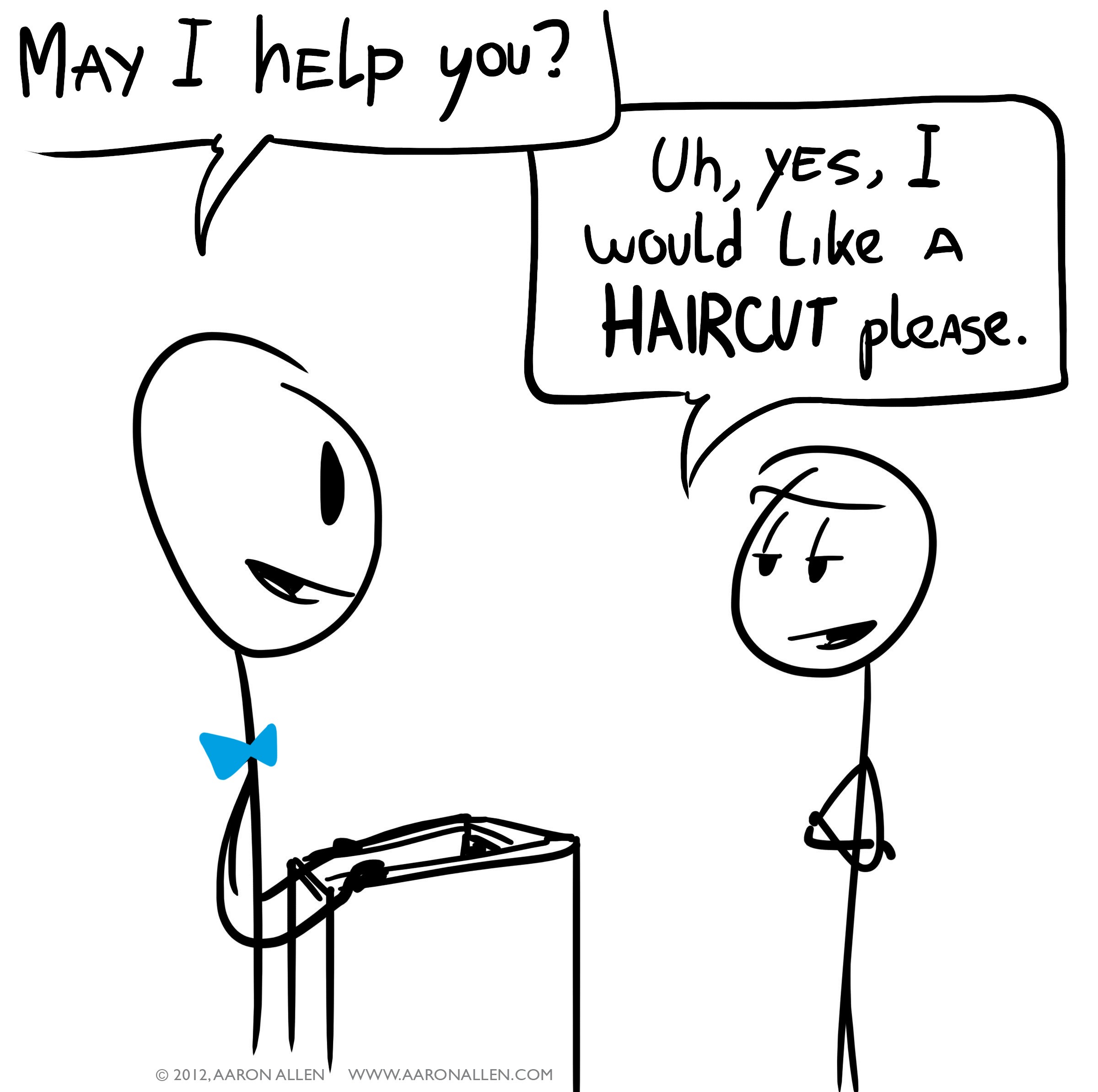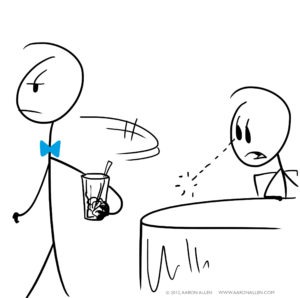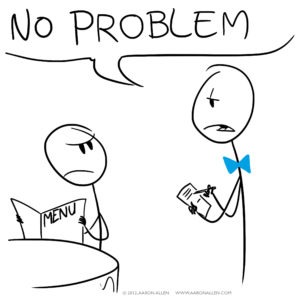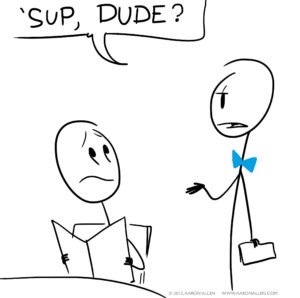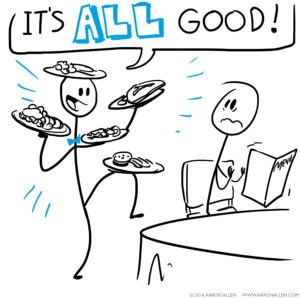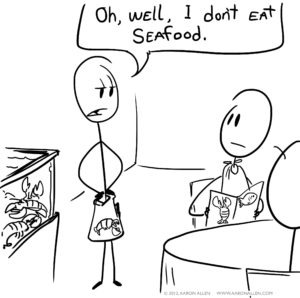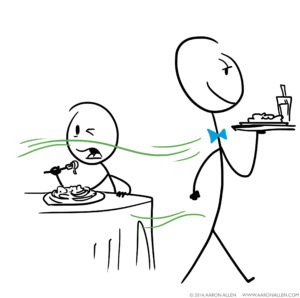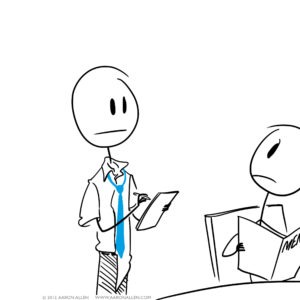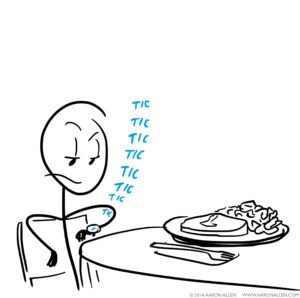Employees are the face of a restaurant. Every interaction employees communicates to guests – whether by design or default. Wait staff should be courteous, welcoming, warm and should represent the brand above all else. Here are some of the most common restaurant service mistakes that we see.

1. POOR GREETINGS
Staff who greet guests with “how many?” or “do you want to sit in the dining room or bar?” rather than a proper welcome. Restaurant employees should be warm, friendly and play the role of “host.” Hosts and hostesses are there to greet people and make them feel welcome, and while this may seem obvious, it isn’t a point that all restaurant greeters grasp. The host(ess) is the first team member that guests encounter when entering a restaurant, and thus are largely responsible for creating their first impression.
Studies indicate that 38 percent of a person’s first impression is established by tone of voice, and 93 percent of a person’s overall judgment of someone else is determined by non-verbal communication – so make sure hosts are standing up straight, smiling and personally greeting each guest. Hosts who seem bored or busy and act like customers are inconveniencing them can be enough to keep people away in the future.
2. “MAY I HELP YOU?”
I often respond “Uh, yes, I would like a haircut please.” to this question. “May I help you?” may be appropriate for customers in a department store who look lost, but it comes off as curt and rude at a restaurant. The vast majority of people who enter a restaurant are there to eat, and team members should greet them appropriately. Instead of “May I help you?”, host staff should try something more along the lines of “Welcome to our restaurant! How many people will be in your party?”
3. “JUST ONE?”
A host or hostess shouldn’t ask a solo diner “just one?” Instead, they should try “will you be dining alone today?” It isn’t safe to assume all single diners are sad to be eating alone. Hosts or hostesses often make this assumption and phrase questions accordingly, which can come off as offensive. For instance, many feel like the question, “Just one?” is judgmental, and implies that a party of one is lacking. Instead, have staff try something more positive and friendly.
Hosts or hostesses should also never sit single diners at the bar unless they expressly ask to be seated there. This can make solo-diners feel awkward and prevent them from returning.
4. REMOVING THE DINER’S DRINK
Taking the diner’s drink away from the table to replenish it, rather that replacing it or refilling at the table derails the meal and conversation. Removing diners’ glasses from the table essentially halts their meal. Little details like this can distract and bother guests enough that they may qualify an otherwise good dining experience as mediocre. Waiters should also bring water as soon as possible once customers are seated, and should refrain from bringing other drinks before bringing water.
5. “NO PROBLEM” VS. “MY PLEASURE”
Saying “No problem” implies that the guests’ requests are inconvenient. Restaurant staff is there to provide a pleasant experience for visitors, and responses like “My pleasure!” are much more appropriate. Everything about the latter phrase implies a willingness to help and puts guests at ease for further inquiries. The change may be subtle, but it makes a huge difference to customers. Employees should use similarly elevated language whenever they interact with diners, and team members should focus on making each guest feel as comfortable and welcome as they do at home.
6. TOUCHING THE TOP OF THE GLASS
Even though restaurant employees wash their hands regularly while at work, customers don’t want someone else touching the upper half of their glass. The top portion is where they are going to put their mouths – this area shouldn’t be handled by anyone but them. Servers should only ever handle the bottom half of a guest’s glass or cup. Many servers aren’t aware that this is in poor taste, however, making this one of the most common (and avoidable) mistakes. Fingerprints near the rim of a glass can be enough for a customer to send the drink back. To help prevent this faux pas, managers should remind employees not to touch the top half of any drink they serve.
7. LACK OF EYE CONTACT
Hosts and hostesses often fail to pause long enough during initial greeting to make eye contact with each guest. Catching a guest’s eye when he or she enters a restaurant is, for many customers, the first human point of contact with a brand. Gestures as simple and personal as a host or hostess pausing to acknowledge a new visitor makes a world of difference. This signal alerts the guests that the host knows they have entered and are waiting for attention.
Many servers try to cut corners in ways that don’t actually save time, such as cutting out the few seconds it takes to make eye contact. This is a mistake, as it weakens the restaurant experience. A host or hostess should be able to establish a personal connection with each customer, and focus on making them feel appreciated and valued. Something as small as looking up can make the difference between guests waiting for their party to be called and deciding to leave to find a friendlier restaurant.
8. OVER-FAMILIARITY
Servers often use overly-friendly and disrespectful names such as “dude,”“buddy” and “pal.” Eating in a restaurant is a business transaction, not a budding friendship – servers should be welcoming, polite and professional. While team members should make customers feel comfortable, they should not be inappropriately friendly or familiar. Using nicknames and overly casual terms for guests is rude and off-putting. Servers should also stand, or, if they are having a difficult time hearing, kneel, at the edge of the table. Sitting down with customers is another overly familiar, invasive gesture that will almost never be appreciated.
9. NOT HAVING RECOMMENDATIONS
Failing to recommend a favorite or popular item detracts from a restaurant team’s professionalism. Suggestive selling is an important skill for waiters and waitresses. Seventy percent of the people who enter a restaurant don’t know what they are going to order ahead of time, and many guests are open to server suggestions. After all, the employees should be intimately familiar with the food at a restaurant. Most often, diners will have a rough idea of what they want and can ask for a server’s recommendation.
For example, they may ask whether the smoked salmon or the tri-tip is better. Staff should never respond with a bland “everything here is good.” If they don’t have a personal favorite, they should be able to respond with which item is most popular. This doesn’t just help direct the customer; it also validates the customers’ taste.
10. COMMUNICATING PERSONAL DISLIKES
Servers are salespeople for a restaurant, and those who are unfamiliar with the cuisine they serve or express that they dislike a particular culinary style (i.e. “oh, well, I don’t eat seafood”) reflects poorly on the restaurant as a whole. While guests can get information about the food from the menu, they often look for a human opinion and expertise from their waiter. This makes sense, as the waiters should reasonably have experience with the food.
If a salesman who doesn’t like a product and is advertising this fact to patrons, there’s a problem. Similarly, if servers have never tried the food they are selling, they can’t properly sell it. Make sure servers have sampled menu items, regularly taste new dishes. Instruct wait staff to suggest items they do like or popular dishes, rather than pointing out menu items they don’t enjoy.
11. OVERUSE OF PERFUME/COLOGNE
Visitors should smell the cuisine, not the waiter. Just as it wouldn’t make sense to put fragrant lilies at the center of a table, waiters should not be wearing half a bottle of obnoxious cologne when serving food. Taste and smell are both the perception of airborne chemicals and, as a result, are intricately intertwined when it comes to food. People use this relationship regularly, which is why they plug their noses when something tastes bad or pause to smell a glass of wine while dining. If a server is wearing strong cologne or perfume, it could literally affect how patrons taste the food at your restaurant.
12. GOSSIPING
Waiters who gossip or talk loudly about improper subjects within earshot of guests can ruin the atmosphere. The waiter-diner relationship is a business transaction. Guests pay to enjoy the food and the atmosphere, and waitstaff is there to serve patrons and represent a restaurant, not to socialize. If servers are speaking inappropriately, such as swearing near a table – especially one with children – or speaking so loudly that guests can’t enjoy their own conversations, guests will view it as a reflection on a restaurant rather than a reflection on individual servers. After a meal dominated by staff’s conversations, guests will be unlikely to return.
13. SLOPPY UNIFORMS
Disheveled appearance and bar stamps on servers’ hands from the night before all reflect poorly on a brand. A restaurant should be built around a story, and staff should reflect that brand. If staff is wearing sloppy clothing or their personal appearance speaks louder than their uniform, the impression they give is one guests will apply to the establishment. To help avoid such discrepancies, make sure to hire people that align with the desired message and brand image. Also, ensure that standards are up to par, including a well-designed uniform and a clearly defined and enforced dress code.
14. BEING UNDERPREPARED
Servers who are ill-prepared when delivering food, such as forgetting to bring a steak knife with steak or a spoon with soup, seem sloppy. Staff should double check that every necessary condiment, piece of cutlery and dish is on their tray before delivering a plate. This means bringing enough appetizer plates, steak knives (if necessary), ketchup with fries and extra napkins with buffalo wings.
Forgetting something that is integral for eating or enjoying a meal can ruin the entire experience for guests. What are they supposed to do with a steak without a knife while they wait? The situation is made even worse when severs take a long time to bring the forgotten item. If a server does forget something, they should bring it as soon as they remember – definitely as soon as the customer inquires – and ask what can be done to fix the situation. Guests will usually require nothing or ask for less than you would initially offer. This gesture takes responsibility for the error and indicates a willingness to remedy the problem.
15. INAPPROPRIATE REMARKS
Servers sometimes make comments that embarrass or belittle a guest, such as “guess you didn’t like that one, huh?” when a guest doesn’t finish everything on their plate. This kind of criticism is annoying to many people, even if it comes from friends or family members. Naturally, people like these judgments even less when they come from strangers at a restaurant. Most guests don’t like to feel the need to justify their tastes to their waiter or waitress, and guests don’t appreciate being made to feel like a child who hasn’t cleaned the dinner plate. Instead of pointing out unfinished items, servers should try asking if everyone enjoyed their meal and focus on the positives of the experience. This is also a great time to ask if anyone would like a desert menu.
16. NOT CHECKING-IN
Not returning to a table within one minute after the entrée is delivered leave guests feeling abandoned. Guests usually discover a missing item – dipping sauce for fries, lemon for fish or extra napkins, perhaps – right at the start of the meal. If visitors have to wait longer than 60 seconds for the server to return, they will either eat the meal without the item and have a less enjoyable experience, or allow the food to grow cold while waiting for attention. Either situation is enough to deter customers from returning, so make sure staff checks on visitors within one minute of delivering each course.
17. REWARDING TENURE OVER MERIT
Employees should be rewarded based on hard work and a job well-done, not just working at a restaurant for the longest period of time. Rewarding employees based solely on tenure provides very poor incentive for new employees to work hard. They will naturally infer that they will receive a reward after a certain amount of time, regardless of excellent service and a standout work ethic. Rewarding on merit helps keep restaurant staff fresh and working hard.
18. INEFFICIENT STAFFING OF STATIONS
Too much or too little help can both be costly, and there is a fine line between having too few servers and too many. It is just as annoying to have three different servers ask if you needed anything as it is having to wait 30 minutes to see a server again. Either mistake can drastically affect guests’ dining experiences and can prevent them from returning if done poorly.
19. NOT REPLENISHING BEVERAGES
Failing to offer to refill beverages in a timely fashion can cut profits, especially when that second $11 glass of wine a customer would have ordered isn’t offered. Beverages, particularly if a guest is drinking alcohol, make up a large portion of a tab, and customers are likely to order two or three drinks if the server returns and offers another at the right moment. The best time for a waiter or waitress to ask is when there is one third of the drink left.
Not only are guests more inclined to accept since they are currently enjoying their drink, but it also spares the embarrassment of having to flag the server and ask for another. Waitstaff should make this a habit with any drink, including water, but particularly with more expensive alcoholic beverages like beer, wine and cocktails – these missed opportunities, in particular, usually cost $8 to $15 apiece.
20. LACKLUSTER FAREWELLS
Allowing guests to leave the restaurant without being properly thanked by the team member who greeted them or someone other than the tip recipient is a big mistake. Truly successful restaurants don’t just serve good food; they also provide fantastic hospitality. A guest is infinitely more likely to return to a restaurant if they felt welcome and appreciated. It is important to have an employee who wasn’t tipped by the customer thank them as they are leaving. The interaction is viewed more as a financial transaction when it comes from the waiter or waitress, since they are often thanking guests for the tip as much as for the visit. Make sure another staff member makes eye contact and gives a genuine smile and thank you to each visitor when they leave.
Is your restaurant having troubles with some of these same mistakes? We can help – click here to start a conversation.
RELATED CONTENT
20 Most Common Restaurant Design Mistakes
10 Trends Reshaping the Restaurant Industry
Questions to Answer Before Launching a New Menu
Are We Relevant?: Questions to Ask During a Restaurant Brand Audit
ABOUT AARON ALLEN & ASSOCIATES:
Aaron Allen & Associates is a leading global restaurant industry consultancy specializing in growth strategy, marketing, branding, and commercial due diligence for emerging restaurant chains and prestigious private equity firms. We have helped helped restaurant companies around the world drive revenues, increase profits, and enhance the guest experience through improved marketing, messaging, and menu engineering. Collectively, our clients post more than $100 billion, span all 6 inhabited continents and 100+ countries, with locations totaling tens of thousands.

